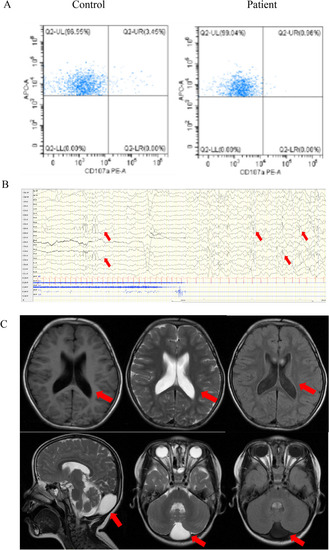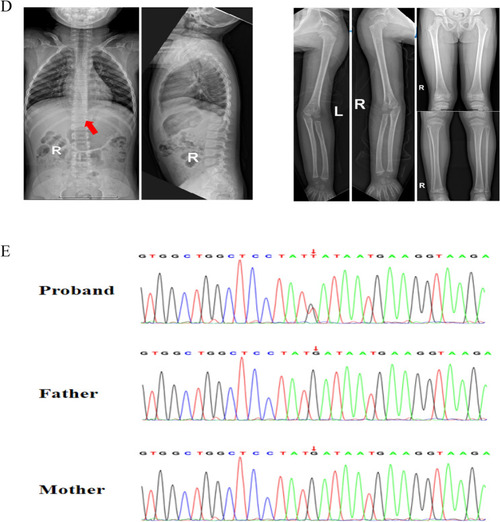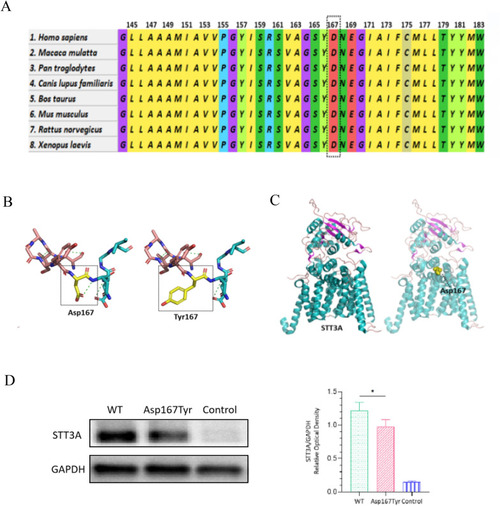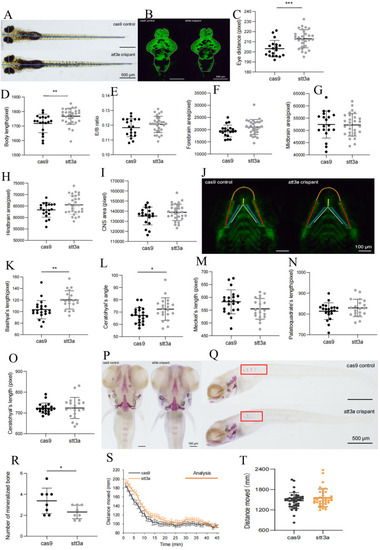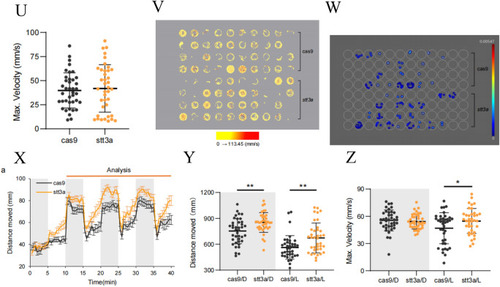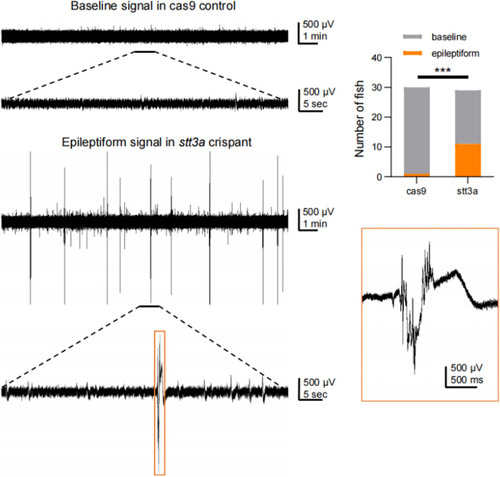- Title
-
Heterozygous pathogenic STT3A variation leads to dominant congenital glycosylation disorders and functional validation in zebrafish
- Authors
- Meng, L., Fang, Z., Jiang, L., Zheng, Y., Hong, S., Deng, Y., Xie, L.
- Source
- Full text @ Orphanet J Rare Dis
|
Clinical images of the proband. |
|
Auxiliary examination of the proband. |
|
Auxiliary examination of the proband. |
|
Characteristics of the variant and protein levels of STT3A. |
|
The phenotype validation of CRISPR-Cas9 established heterozygous knockdown zebrafish. |
|
The phenotype validation of CRISPR-Cas9 established heterozygous knockdown zebrafish. |
|
Representative electrophysiological signals of zebrafish in the Cas9 control group and the |


